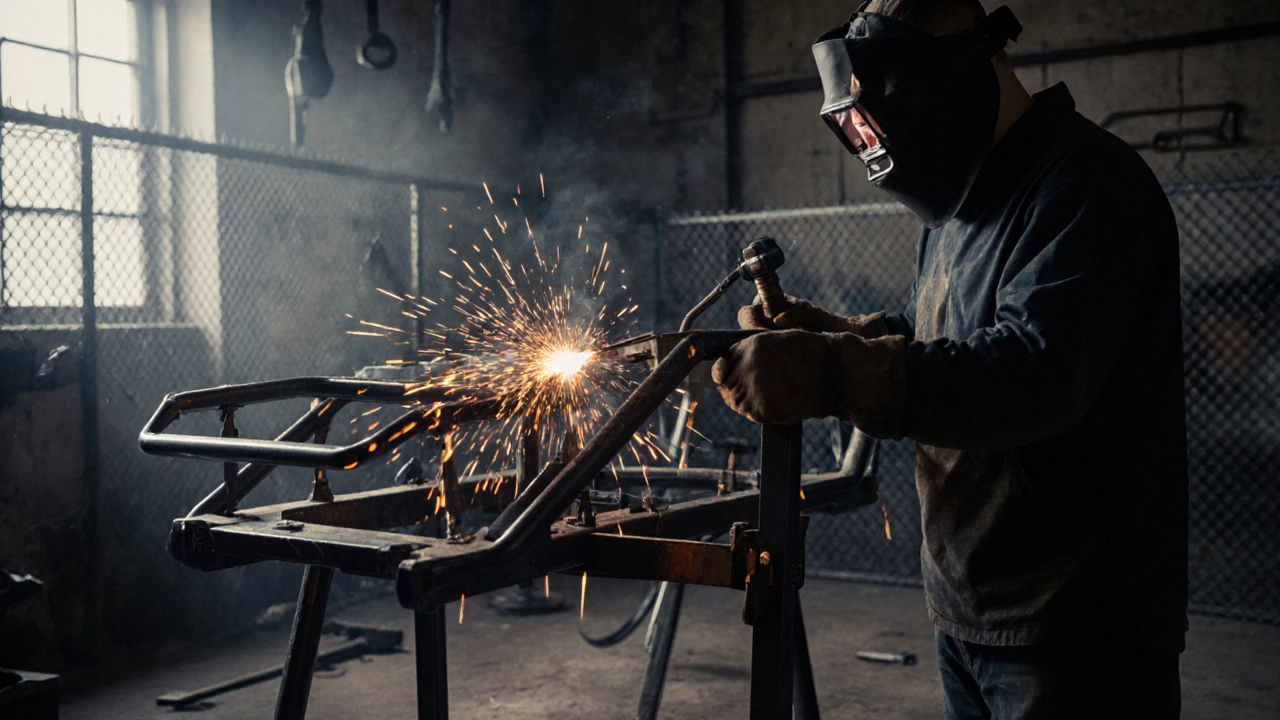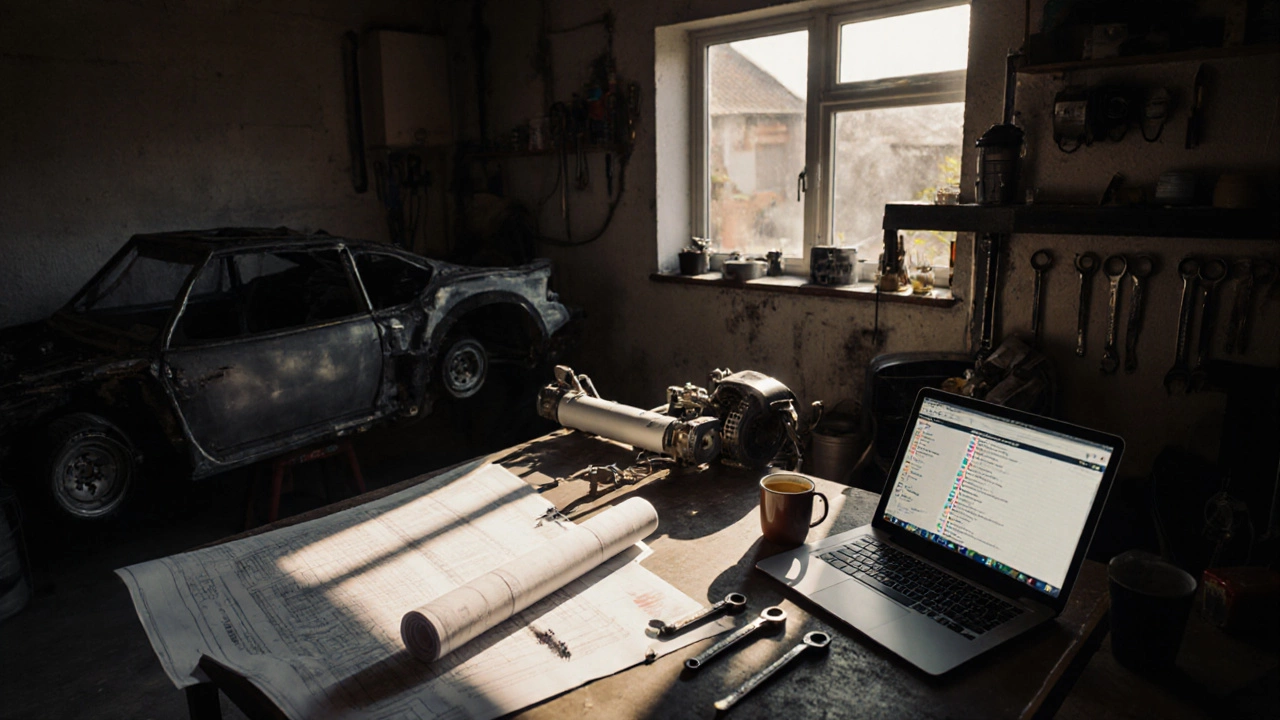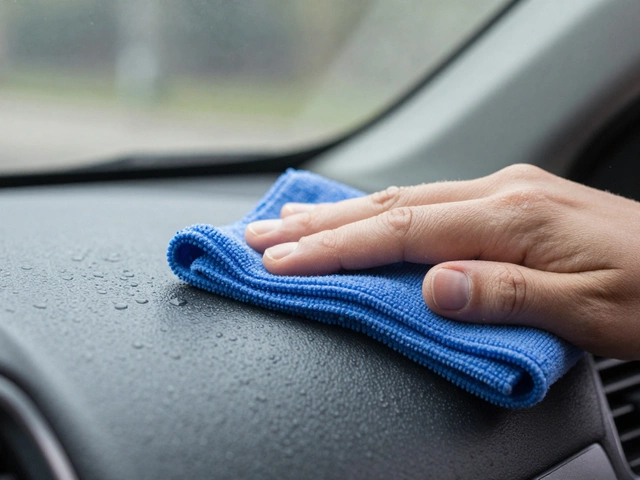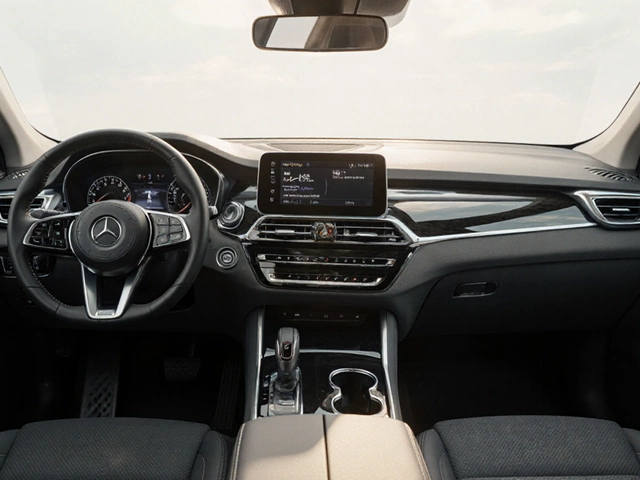Kit Car Build Time Estimator
Estimate how long your kit car build will take based on your specific situation.
0 weeks
Build Time Breakdown
Kit car build time is a question that pops up whenever someone watches a replica cruising down the street or spots a sleek body‑kit on a forum. The short answer? It varies wildly, but you can estimate it with a solid checklist, realistic hours, and a few insider tips.
What Exactly Is a Kit Car?
Kit car is a complete set of parts - chassis, body panels, suspension, wiring, and often a drivetrain - sold to an enthusiast who assembles the vehicle themselves or with a small shop. The concept dates back to the 1950s, when hobbyists wanted an affordable way to own a sports‑car lookalike without buying a brand‑new model.
Why Build a Kit Car?
- Creative freedom - you pick the paint, wheels, and interior.
- Cost savings - a finished replica often costs half the price of a factory model.
- Skills development - wiring, welding, and panel fitting become second nature.
- Legal uniqueness - a properly registered kit car can be a one‑off in your state.
Breaking Down the Build Process
Every kit car journey shares four major phases: planning, chassis work, body work, and finishing. Below is a step‑by‑step breakdown with typical hour ranges.
- Planning & paperwork (10‑20 h) - Choose a donor car, verify compliance with Australian Design Rules (ADR), order the kit, and arrange a build space.
- Chassis preparation (30‑70 h) - Unframe the donor, weld a new ladder or space‑frame, install mounting points, and fit the suspension sub‑assemblies.
- Body installation (20‑50 h) - Align and rivet or bond the fiberglass body, seal seams, and add exterior trim.
- Powertrain & wiring (15‑40 h) - Mount the engine, attach the wiring harness, connect fuel and exhaust, and run cooling lines.
- Interior & fit‑out (10‑30 h) - Install seats, dash, gauges, and any custom upholstery.
- Paint & final touches (15‑40 h) - Prime, paint, clear‑coat, polish, and apply graphics or decals.
- Inspection & registration (5‑10 h) - Pass a state road‑worthy inspection and obtain a registration plate.
Adding up the low‑end ranges gives roughly 105 hours; the high‑end can exceed 260 hours. For a weekend warrior who can spare 8 hours a week, that’s about 3‑6 months of work.
Typical Build Times by Kit Type
| Kit Category | Parts Pre‑assembled | Typical Build Hours | Difficulty |
|---|---|---|---|
| Simple Body‑Kit Only | Chassis, Engine, Suspension | 80‑120 | Low |
| Mid‑Level Replica (e.g., 1965 Mustang) | Chassis kit + pre‑welded sub‑frame | 130‑190 | Medium |
| Full‑Scale Supercar Replica | Space‑frame + pre‑wired harness | 200‑260 | High |
| Professional Shop Build | Mostly pre‑assembled | 60‑90 | Low‑Medium |
Factors That Can Stretch or Shrink Your Timeline
- Experience level - A seasoned welder will finish chassis work in half the time of a first‑timer.
- Tool availability - Having a proper jig, torque wrench, and paint booth cuts hours dramatically.
- Donor car condition - A rust‑free donor reduces prep work.
- Regulatory hurdles - In Queensland, the ADR 79/03 compliance test can add paperwork days.
- Weather - Outdoor paint jobs suffer delays in rainy Brisbane summers.

Pro Tips to Speed Up Your Build
- Draft a detailed schedule before the first bolt. Treat every hour like a billable task.
- Buy a pre‑wired harness. Wiring is the most time‑consuming and error‑prone step.
- Use a chassis jig. Consistent alignment saves countless re‑drills.
- Partner with a local motor club. Experienced members often volunteer to help with tricky welds.
- Document each step with photos. It makes the final registration inspection smoother.
Cost vs. Time: What to Expect
A typical $30,000 kit can balloon to $40,000-$50,000 once labor, tools, and paint are factored in. If you’re paying a professional shop, the hourly rate (AU$90‑$120) makes time the biggest expense. Doing it yourself can halve the dollar cost but double the calendar weeks.
Real‑World Example: My First Build
In 2022 I bought a 1973 MG‑style replica kit. I allocated 12 weeks, working 10 hours each Saturday. The chassis took 45 hours (mostly welding a space‑frame), the body took 30 hours, and the engine/wiring took another 25 hours. Paint was the bottleneck - a rainy weekend added 12 extra hours. Total? 115 hours over 14 weeks. The car passed the Queensland road‑worthy test on the first try.
When to Call a Professional
If you lack a MIG welder, a proper paint booth, or the confidence to pass a state inspection, hiring a specialist for chassis or paint can shave weeks off the schedule. Many shops offer “partial builds” where they finish the frame and body, leaving interior work to you.
Bottom Line: How Long Does It Take?
Answering the headline question: a simple body‑kit can be road‑ready in 100‑130 hours, a mid‑level replica usually needs 140‑200 hours, and a full‑scale supercar replica often tops 250 hours. Your personal skill set, tool arsenal, and local regulations will shift those numbers, but with a solid plan you can keep the project within a realistic timeframe.

Do I need a special license to build a kit car in Australia?
No special construction license is required, but you must have a valid driver’s licence to test‑drive the car and you’ll need to pass a road‑worthy inspection that checks compliance with the Australian Design Rules.
Can I use any donor car for a kit car?
Most kits are designed around common donor platforms - typically a robust, rear‑wheel‑drive vehicle like a Mazda MX‑5, Toyota Corolla, or a classic Ford. Using a donor that matches the kit’s mounting points reduces custom fabrication.
How much does a professional paint job add to the timeline?
A professional paint shop usually completes prep, primer, basecoat, and clear‑coat in 2‑3 days (about 20‑30 hours). Factor in drying time and possible re‑coats, and you’re looking at an extra week total.
Is it cheaper to buy a pre‑wired harness?
Yes. A pre‑wired harness can cost $800‑$1,200, but it saves 15‑25 hours of messy troubleshooting. The time saved often outweighs the upfront expense.
What are the biggest pitfalls for first‑time builders?
Under‑estimating prep work, skipping a chassis jig, ignoring local ADR compliance, and rushing the paint job. Plan for extra buffer time and double‑check the registration requirements.






